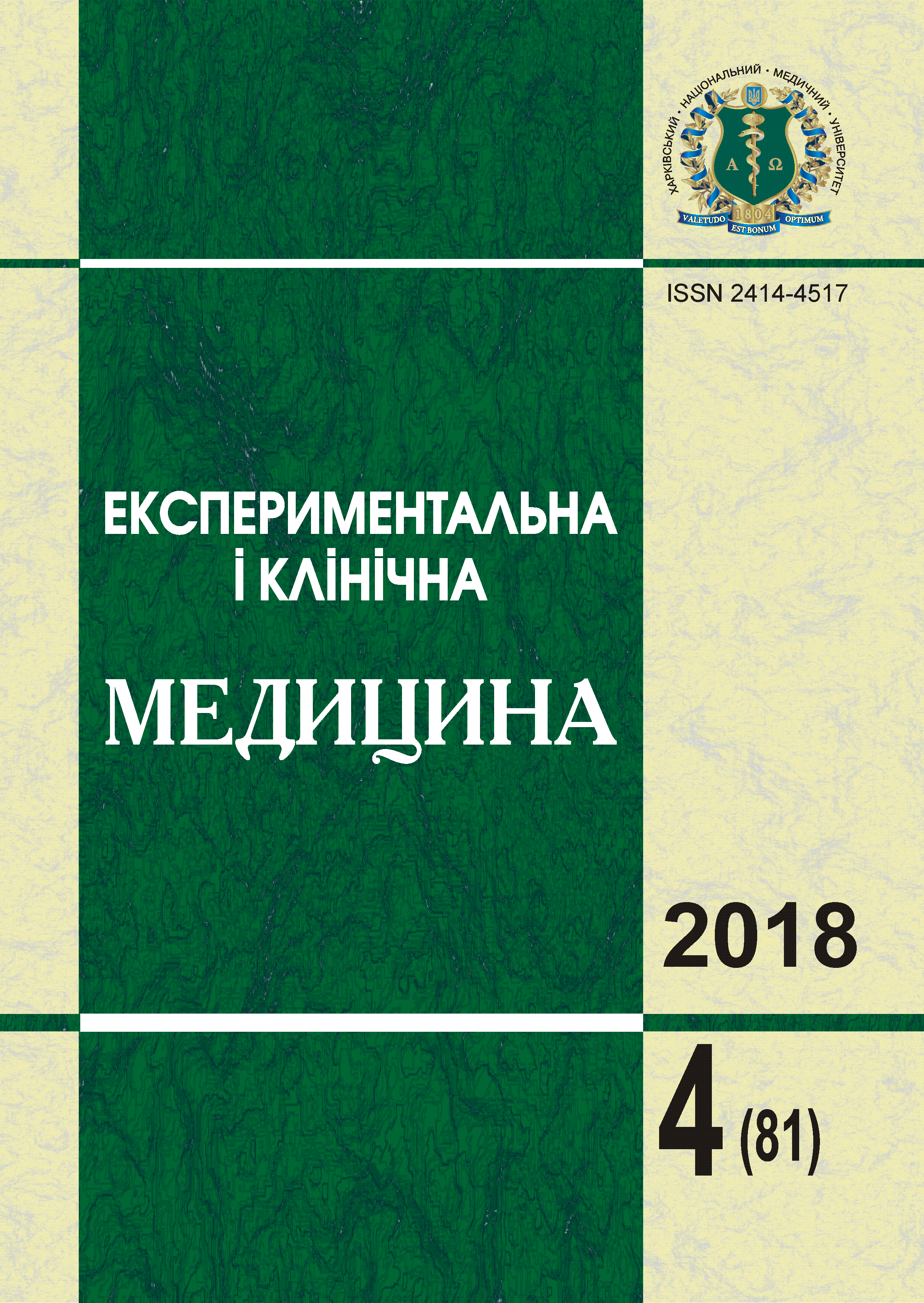Abstract
The method for analysis of the effect of airflow on the nasal mucosa is proposed in the paper. This method is based on the separation of turbulent air flow into a turbulent core and laminar boundary layer. The studies have shown that with increasing respiration rate (volume air flow) the thickness of the laminar boundary layer decreases. At the same time, a significant difference in the thicknesses of the boundary layer is observed in the area of low and average flow rates with quiet and moderate nasal breathing. The thickness of the boundary layer decreases sharply during forced respiration, especially with constriction of nasal cavity, which is typical for hypertrophic rhinitis. These experimental results require further study, cytological verification, clinical evaluation and validation.References
Pukhlik S.M. (2010). Zatrudnennoie nosovoie dykhaniie [Obstructed nasal breathing]. Rinolohiia – Rhinology, № 2, pp. 63–75 [in Russian].
Morokhoiev V.I (2010). Optimizatsiia metodov diahnostiki i khirurhicheskoi korrektsii iskrivleniia perehorodki nosa [Optimization of diagnostic methods and surgical correction of nasal septum deviation]. Biulleten Vostochno-Sibirskoho nauchnoho tsentra Sibirskoho otdeleniia RAMN – Bulletin of the East-Siberian Scientific Center of the Siberian Branch of the Russian Academy of Medical Sciences, № 6, pp. 73–78 [in Russian].
Khodzitskaia V.K., Khodzitskaia S.V. (2012). Nazalnaia obstruktsiia: nekotoryie aspekty morfolohii, etiopatoheneza, kliniki i lecheniia [Nasal obstruction: some aspects of morphology, etiopathogenesis, clinic and treatment]. Ukrayinskyi medychnyi chasopys – Ukrainian medical journal, № 1 (87) I–II, pp. 111–113 [in Russian].
Kriukov A.I., Kunelskaia N.L., Ivoilov V., Arkhanhelskaia I.I. (2016). Sindrom nazalnoi obstruktsii: alhoritm diahnostiki i terapii u detei i vzroslykh [Nasal obstruction syndrome: an algorithm for diagnosis and therapy in children and adults]. Meditsinskii sovet – Medical Council, № 6, pp. 8–10 [in Russian].
Piskunov G.Z. (2004). Mozhno li schitat' endomikroskopicheskiie metody rinosinusolohii dokazatelnymi metodami khirurhicheskoho lecheniia? [Can endomicroscopic methods of rhinosinusology be considered as evidence-based methods of surgical treatment?]. Rossiiskaia otorinolarinholohiia – Russian Otorhinolaryngology, № 3, pp. 81–85 [in Russian].
Hüttenbrink K.-B. (2007). AWMF. Riechstoerungen – Leitlinie zur Epidemiologie,Pathophysiologie, Klassifikation, Diagnose und Therapie [Electronic resource]. Access: http://www.awmf.org/leitlinien/detail/ll/017-050.html
Fonteyn S., Huart C., Deggouj N., Collet S., Eloy P., Rombaux P. (2014). Non-sinonasal-related olfactory dysfunction: A cohort of 496 patients. Eur. Ann. Otorhinolaryngol. Head. Neck Dis., vol. 131 (2), pp. 87–91.
Voznesenskaia A.Ye., Kliuchnikova M.A., Rodionova Ye.I. (2011). Rasstroistvo obonianiia cheloveka kak marker neirodehenerativnykh zabolevanii [Disorder of the human sense of smell as a marker of neurodegenerative diseases]. Sensornyie sistemy – Sensory Systems, vol. 25, № 1, pp. 17–31 [in Russian].
Morozova S.V., Savateieva D.M., Petrova Ye.I. (2014). Oboniatelnyie rasstroistva u patsiientov s neirodehenerativnymi zabolevaniiami [Neurological Journal]. Nevrolohicheskii zhurnal – Neurological Journal, № 1, pp. 4–8 [in Russian].
Ekström I., Sjölund S, Nordin S., Nordin Adolfsson A., Adolfsson R., Nilsson L.G. et al. (2017). Smell Loss Predicts Mortality Risk Regardless of Dementia Conversion. J. Am. Geriatr. Soc., vol. 65 (6), pp. 1238–1243. DOI: 10.1111/jgs.14770.
Pinto J.M., Wroblewski K.E., Kern D.W., Schumm L.P., McClintock M.K. (2014). Olfactory dysfunction predicts 5-year mortality in older adults. PLoS ONE, Okt. 1, vol. 9 (10). DOI: org/10.1371/journal.pone.0107541.
Ismail H.F., Osman E., AL-Omari A.K., Avrunin O.G. (2012). The role of paranasal sinuses in the aerodynamics of the nasal cavities. International Journal of Life Science and Medical Research, vol. 2, 3, pp. 52–55. DOI: 10.5963/LSMR0203004.
Avrunin O.G., Tomashevskii R.S., Faruk Kh.I. (2015). Metody i sredstva funktsionalnoi diahnostiki vneshneho dykhaniia [Methods and means of functional diagnostics of external respiration]. Kharkov: KhNADU, 208 p. [in Russian].
Nosova Ya., Avrunin O.G., Semenets V.V. (2017). Biotechnical system for integrated olfactometry diagnostics. Innovative technologies and scientific solutions for industries, № 1 (1), pp. 64–68. DOI: 10.30837/2522-9818.2017.1.064
Avrunin O.H., Bezshapochnyi S.B., Bodianskyi Ye.V., Semenets V.V., Filatov V.O. (2018). Intelektualni tekhnolohii modeliuvannia khirurhichnykh vtruchan [Intelligent technologies of modeling of surgical interventions]. Kharkiv: KhNURE, 224 p. [in Ukrainian].
Bezshapochnyi S.B., Loburets A.V., Avrunin O.H. (2017). Dosvid zastosuvannia metodu kompiuternoho planuvannia khirurhichnoho vtruchannia u patsiientiv z khronichnym frontytom [Experience of using the method of computer planning of surgical intervention in patients with chronic frontal]. Svit medytsyny ta biolohii – World of Medicine and Biology, № 3, pp. 27–32 [in Ukrainian].
Avrunin O.G., Alkhoraief M., Saied H.F.I., Tymkovych M.Y. (2015). The surgical navigation system with optical position determination technology and sources of errors. Journal of Medical Imaging and Health Informatics, vol. 5, pp. 689–696.
Nosova Ya.V., Avrunin O.G., Faruk Kh.I. (2018). Opredeleniie mikrokharakteristik vozdushnoho potoka v nosovoi polosti pri dykhanii [Definition of microcharacteristics of the air flow in the nasal cavity during breathing]. Vestnik NTU «KHPI». Seriia: Novyie resheniia v sovremennykh tekhnolohiiakh – Bulletin of NTU "KPI". Series: New solutions in modern technologie. Kharkov: NTU «KHPI», № 16 (1292), pp. 122–127. DOI: 10.20998/2413-4295.2018.16.19.
Avrunin O.H. (2009). Opyt razrabotki biomeditsinskoi sistemy tsifrovoi mikroskopii [Experience in the development of a biomedical digital microscopy system]. Prikladnaia radioelektronika – Applied Radio Electronics, vol. 8, № 1, pp. 46–52 [in Russian].

